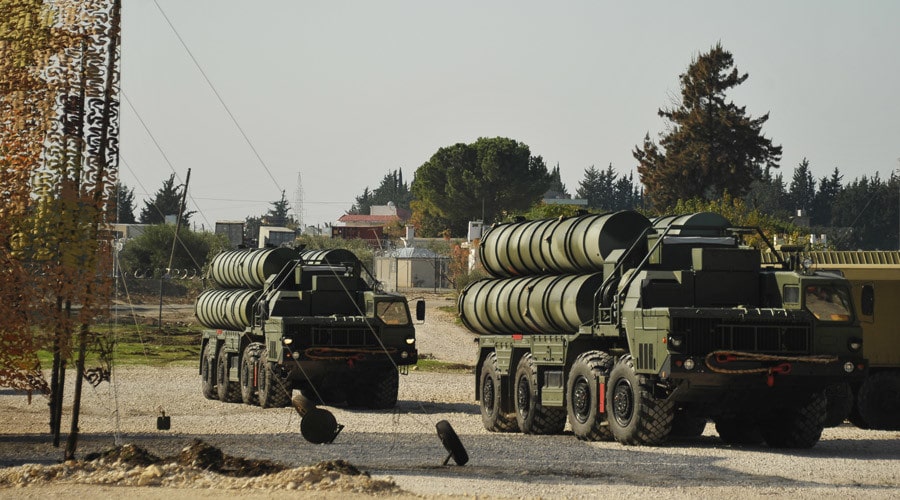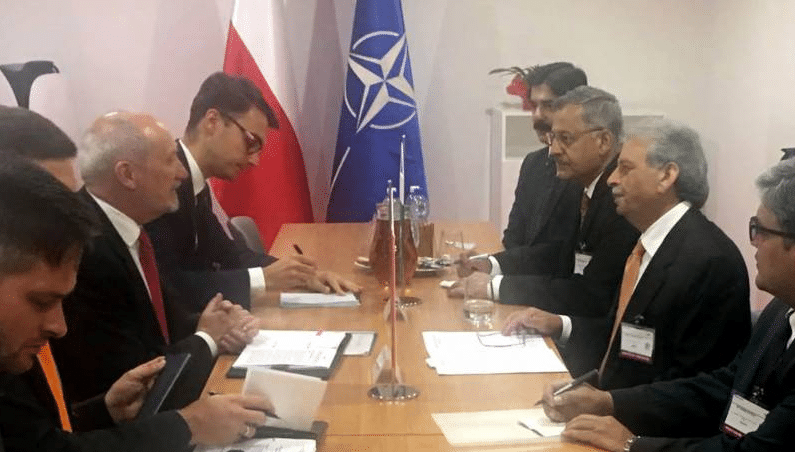23Views 8Comments

Erdogan: Turkey has finalized S-400 purchase, placed deposit
President Recep Tayyip Erdoğan announced that Turkey had already finalized and signed onto a purchase of Almaz-Antey S-400 long-range surface-to-air missile (SAM) systems from Russia.
In a statement to Turkish journalists, Erdoğan revealed that Turkey had already paid a deposit to Russia, though it is still engaging on an intergovernmental basis on the issue of export credit to support the deal.
“Our friends have already signed [an agreement on] S-400s. A deposit has also been paid, as far as I know. The process will continue by the transfer of a credit from Russia to us. Both Mr. [Russian President Vladimir] Putin and myself, we are determined on this issue,” said Erdogan to journalists (via Hurriyet).
In July, Bloomberg reported that Ankara and Moscow agreed to a $2.5 billion U.S. contract for four S-400 systems. It is believed that a measure of transfer-of-technology will be involved, though to what extent is not known, though Bloomberg reported that two of the S-400 systems would be ‘produced’ in Turkey.
Turkey began seeking the S-400 in November 2016, with negotiations occurring in February and March of this year. In June, Russian President Vladimir Putin informed journalists that a deal was being finalized.
Besides the 40N6 missile, which has a range of 400 km, the S-400 also comprises of the 9M96E, 9M96E2 and 48N6, which have ranges of 60 km, 120 km, and 250 km, respectively. Turkey will be the third foreign S-400 user, following China and India. Almaz-Antey is also developing a complementary medium-to-long-range system in the S-350E, which will also use the S-400’s 9M96E (60 km) and 9M96E2 (120 km) missiles.
In parallel to the S-400, the Turkish companies Aselsan and Roketsan signed a “Heads of Agreement” with French-Italian consortium Eurosam to fulfill the Turkish Undersecretariat of Defence Industries (SSM)’s requirement for a homegrown long-range SAM system. Development of the system will commence after a “definition study”, which is expected to require up to 24 months (Defense Aerospace).
Notes & Comments:
Assuming the S-400 deal is in effect, it appears that Turkey is acquiring the S-400 with the goal to provide high-level air defence coverage. In turn, the Aselsan-Roketsan-Eurosam/SSM-commissioned program will complement the S-400 in the capacity of a medium-to-long-range system analogous to the S-350E.
The SSM commissioned the homegrown SAM program in response to the HQ-9 deal with China failing in 2015. The HQ-9 (at least its export variant, FD-2000) has a range of 125 km (Air Power Australia), so it sits in the area of the S-350 and Aster 30 SAMP/T [Surface-to-Air Missile Platform/Terrain]. Turkey’s TF-2000 anti-air warfare (AAW) frigate will likely be fit with a variant of the SSM-commissioned SAM. Aselsan has also been working on radar solutions, such as the ÇAFRAD suite for the TF-2000.
The S-400 and SSM projects, if brought to fruition, would largely complete Turkey’s air defence plans, with short-range air defence (SHORAD) and very short-range air defence (VSHORAD) systems in production, or at least nearing production. The Aselsan Korkut self-propelled anti-air gun (SPAAG) entered production in March, it will form Turkey’s mobile VSHORAD element. This will be augmented with the Roketsan HİSAR-A short-range (15 km) SAM, which will operate in-concert with the Korkut SPAAG (with the Korkut’s fire-control radar guiding the HİSAR-A SAM). The HİSAR-O, which is to have a range of 25 km, will form Turkey’s medium-range air defence layer.


